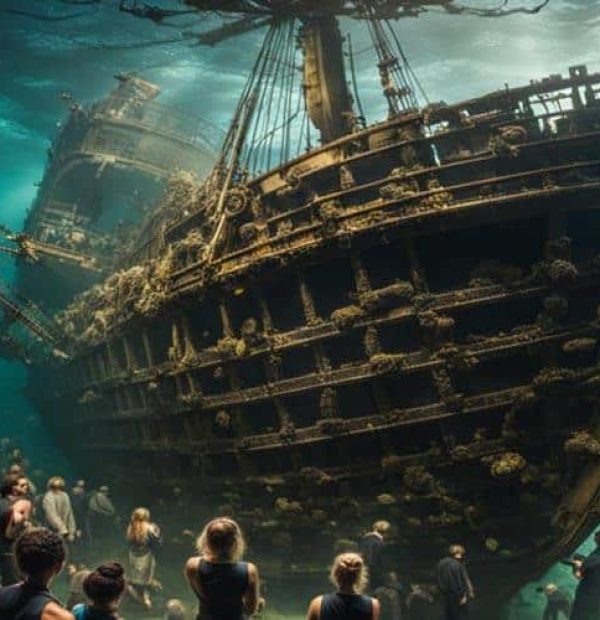Thursday, 16 May 2024
Menu

At the bottom of Lake Markermeer, near Hoorn, a large number of shipwrecks have been discovered that probably represent the remains of a Spanish fleet from 1573.
The victory in this battle was one of the key moments in the Eighty Years’ War (1568-1648), in which the Netherlands fought for liberation from Spanish rule. With the end of the conflict, the Netherlands left the Holy Roman Empire.
But where did Spanish wrecks from the 16th century come from at the bottom of Lake Markermeer? Well, it’s very simple. In 1976, the Afsluitdijk dam was completed, turning the Zuiderzee Bay into Lake IJsselmeer. The body of water further down the coast then became Lake Markermeer.
During the work carried out on the lake using side scan sonar, a huge number of objects were found in a 73 km² area, which are clearly wrecks of wooden vessels. Interestingly, it should be relatively easy to carry out exploratory work underwater, as the average depth of the body of water is only 3-4m.
It is also worth noting that not everything may be visible on sonar images. The lake has a sandy and soft bottom, due to which many wrecks or their elements may be buried in the ground. However, this also has a good side, as in this way certainly the elements buried under the layer of sediments could survive in relatively good condition.
According to information published by the Cultural Heritage Agency of the Netherlands, in the summer of 2021 underwater archaeologists will determine whether the discovered wrecks are indeed the remains of a 16th-century Spanish armada.










Welcome to DIVERS24.COM, your daily source of scuba news, freediving, scuba diving information, and equipment reviews. Our comprehensive coverage of the dive industry from A to Z provides you with all the latest scuba news, training updates, underwater photography tips, and everything else related to scuba diving. Whether you’re a beginner or an experienced diver looking for more knowledge about scuba gear or techniques – we’ve got it covered! With our in-depth articles written by experienced divers who have been there and done that, you are sure to find exactly what you need here at Divers24.com. Dive into scuba news today!
Underwater Media Sp. z o.o.
Szafarnia 11/F8,
80-755 Gdansk, Poland
Welcome to DIVERS24.COM, your daily source of scuba news, freediving, and scuba diving information. Sign in for a weekly news update and discount coupons for dive gear and apparel.
@2023 - underwatermedia.pl. All Right Reserved. Designed and Developed by Tworzenie stron internetowych Gdansk

The Divers24 portal is currently the largest online medium treating diving in Poland. Since 2010 we have been providing interesting and important information from Poland and around the world on all forms of diving and related activities.
Contact us: info@divers24.com